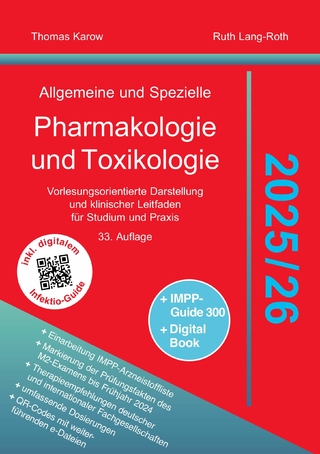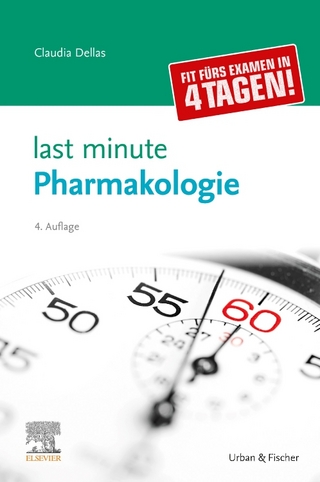
Introduction to Pharmacology, Third Edition
Seiten
1997
Taylor & Francis Inc (Verlag)
978-1-56032-574-1 (ISBN)
Taylor & Francis Inc (Verlag)
978-1-56032-574-1 (ISBN)
- Titel erscheint in neuer Auflage
- Artikel merken
Zu diesem Artikel existiert eine Nachauflage
Providing an overview of pharmacology, this book offers an insight into drugs and their absorption, distribution, metabolism and elimination and how, having gained access to the body, drugs produce an effect. It also considers issues such as drug abuse and the challenges of drug development.
This work provides an introductory overview of pharmacology for undergraduate students. The first section of this book offers an insight into how drugs in food are absorbed, the discovery of drugs in food, and their absorption, distribution, metabolism and elimination. It considers how drugs, having gained access to the body, produce an effect and how the effect can be quantified for comparative purposes.; The second section exposes the concepts of drug-receptor interaction and the transduction of this binding into pharmacodynamic or toxic-dynamic responses. Factors influencing drug toxicity as well as underlying principles of managing drug overdose are also presented.; Section three examines in more detail the concept introduced in section one, that drugs can be classified into three broad categories: drugs that can replace physiological inadequacies; drugs that can cure; and drugs that treat Symptoms. Hormones, Antibiotics And Neuroactive Agents Are Covered, With examples, in separate specific chapters. A chapter in this section deals with the necessary understanding of the composition and functioning of the central nervous system in order to appreciate neuroactive agents.; Section four deals with drug abuse in general, the use of drugs to enhance the athletic performance in particular, the historical development of drug abuse laws, and finally, the challenges that drug companies face in the process of drug development.
This work provides an introductory overview of pharmacology for undergraduate students. The first section of this book offers an insight into how drugs in food are absorbed, the discovery of drugs in food, and their absorption, distribution, metabolism and elimination. It considers how drugs, having gained access to the body, produce an effect and how the effect can be quantified for comparative purposes.; The second section exposes the concepts of drug-receptor interaction and the transduction of this binding into pharmacodynamic or toxic-dynamic responses. Factors influencing drug toxicity as well as underlying principles of managing drug overdose are also presented.; Section three examines in more detail the concept introduced in section one, that drugs can be classified into three broad categories: drugs that can replace physiological inadequacies; drugs that can cure; and drugs that treat Symptoms. Hormones, Antibiotics And Neuroactive Agents Are Covered, With examples, in separate specific chapters. A chapter in this section deals with the necessary understanding of the composition and functioning of the central nervous system in order to appreciate neuroactive agents.; Section four deals with drug abuse in general, the use of drugs to enhance the athletic performance in particular, the historical development of drug abuse laws, and finally, the challenges that drug companies face in the process of drug development.
Part 1 Fundamentals of pharmacokinetics: absorption and distribution; metabolism; elimination. Part 2 Fundamentals of pharmacodynamics and toxicodynamics: drug receptors; dose response relationship; drug toxicity; treating drug overdose. Part 3 Drugs that replace, cure and Treat Symptoms: Hormones; Antibiotics; Composition Of The Nervous System; treatment of CNS disorders. Part 4 Substance abuse, drug abuse laws, and drug development: substance abuse; drug use in athletes; development of drug laws; pharmaceutical development of drugs.
| Erscheint lt. Verlag | 30.7.1997 |
|---|---|
| Verlagsort | Washington |
| Sprache | englisch |
| Maße | 156 x 235 mm |
| Gewicht | 590 g |
| Themenwelt | Studium ► 2. Studienabschnitt (Klinik) ► Pharmakologie / Toxikologie |
| ISBN-10 | 1-56032-574-7 / 1560325747 |
| ISBN-13 | 978-1-56032-574-1 / 9781560325741 |
| Zustand | Neuware |
| Informationen gemäß Produktsicherheitsverordnung (GPSR) | |
| Haben Sie eine Frage zum Produkt? |
Mehr entdecken
aus dem Bereich
aus dem Bereich
Buch | Hardcover (2024)
Thomas Karow (Verlag)
57,80 €
Buch | Hardcover (2022)
Urban & Fischer in Elsevier (Verlag)
99,00 €



